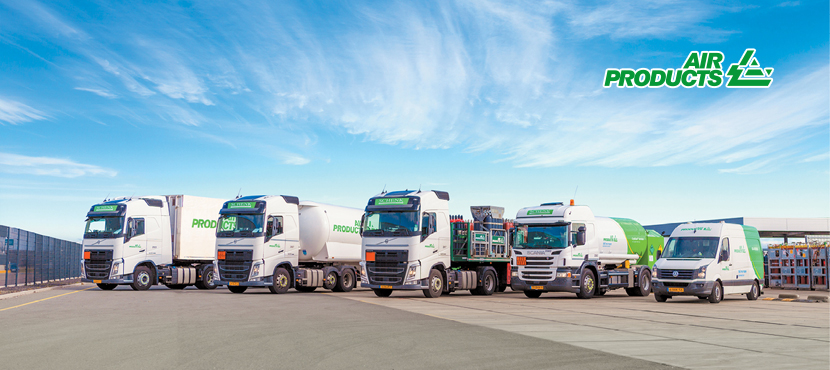Bunaqa til mavjud emas “Ingliz (Amerika)”. For the sake of viewer convenience, the content is shown below in the alternative language. You may click the link to switch the active language.
A Landmark Investment
In partnership with Navoiyazot JSC., a cornerstone producer responsible for over 30% of Uzbekistan’s chemical outputs, Air Products a global industrial gases leader, is investing $15+ million to develop, build, own, and operate a groundbreaking CO₂ production facility in Navoiy, Uzbekistan. This state-of-the-art plant marks the first international low-carbon CO₂ production facility in the country, signaling a significant stride toward a more sustainable industrial future in Central Asia.
The project is scheduled for completion by the end of 2024, with operations commencing in January 2025.
Revolutionizing CO₂ Production
The Navoi CO₂ Cluster is designed to capture raw CO₂ emissions from an existing ammonia production line. By utilizing captured CO₂, the facility mitigates reliance on CO₂ produced through the burning of natural gas, thereby aligning with Uzbekistan’s environmental goals and reducing its carbon footprint.
“With this facility, we aim to revolutionize the processing of raw CO₂ into high-purity CO₂, setting new benchmarks for production standards in the region,” said Kirill Korotkov, Merchant General Manager of Air Products Uzbekistan. “Our dedication to sustainability and innovation motivates us to pursue groundbreaking solutions that cater to the evolving needs of our customers. This investment represents our unwavering commitment to fostering a cleaner and more sustainable future in Uzbekistan and beyond. We are happy to be implementing this project with our reliable partner Navoiy Azot”
Unmatched Production Capacity and Purity
Upon its launch, the Navoi CO₂ Cluster will boast the largest production capacity in Uzbekistan, generating up to 120 tons of CO₂ per day. The facility ensures the highest product purity levels at 99.99%, producing certified food-grade CO₂ suitable for a wide array of applications, including food and beverage processing, welding mixtures, dry ice production, modified atmosphere packaging, flash food freezing, green housing, agriculture, water treatment, cryo-medicine, medical transportation, as well as paper and glass manufacturing.
Ensuring Reliability and Efficiency
One of the key advantages of the Navoi CO₂ Cluster is its ability to provide a reliable and consistent source of CO₂, particularly during peak demand seasons. This reliability addresses previous challenges associated with supply interruptions, ensuring that various industries can maintain their operations without disruption.
DID YOU KNOW
CO2 is widely used in Food Industry for:
Food Freezing. How? CO2 is utilized in its liquid or gas form at extremely low temperatures. As a cryogen, it significantly lowers the temperature of the food, leading to quick freezing. This rapid freezing helps in forming smaller ice crystals, which minimizes cell damage in the food, maintaining its texture and taste. Commonly used for seafood, meats, fruits, vegetables, and even bakery items, It allows for the preservation of the food’s natural color, flavor, and nutritional content.
Carbonation of Beverages. How? CO₂ is dissolved in beverages like soda, sparkling water, beer, and champagne to create carbonation, giving these drinks their characteristic fizz. It enhances taste and mouthfeel, preserves freshness, and can influence the perception of sweetness and acidity in beverages.
Modified Atmosphere Packaging (MAP). How? MAP involves replacing the air inside packaging with a controlled mixture of gases, typically including CO₂, to extend the shelf life of perishable foods such as meats, cheeses, and fresh produce. It inhibits the growth of aerobic bacteria and fungi, reduces oxidation, and maintains the color and freshness of food products.
Dry Ice for Preservation and Transportation. How? Dry ice, the solid form of CO₂, is widely used to keep perishable goods frozen during transportation without the mess of water residue. It provides effective cooling, sublimates directly into gas (leaving no liquid residue) and extends the viability of frozen and refrigerated products.
Increase in yield and quality of greenhouse vegetables. How? CO₂ is a fundamental component of photosynthesis, the process by which plants convert light energy into chemical energy. By increasing CO₂ concentrations, plants can photosynthesize more efficiently, leading to faster growth and higher biomass production.
Metal Fabrication
Shielding Gas in Welding (CO₂ Welding). How? CO₂ is used as a shielding gas in Metal Inert Gas (MIG) welding to protect the weld pool from atmospheric contaminants like oxygen and nitrogen. Cost-effective it provides deep weld penetration and is suitable for welding a variety of metals including steel and stainless steel.
Conclusion
From preserving the freshness of our food and beverages to ensuring the structural integrity of metal products, CO₂ continues to drive innovation and efficiency. Moreover, as industries strive toward more sustainable practices, the role of CO₂ in environmentally friendly and cost-efficient technologies and processes is becoming increasingly significant. With its high purity standards, significant production capacity, and dependable supply chain, the Navoiy CO₂ Facility is poised to drive both economic and environmental progress, benefiting a multitude of industries and contributing to the broader goals of reducing carbon emissions.
Press Office Air Products Central Europe Central Asia
